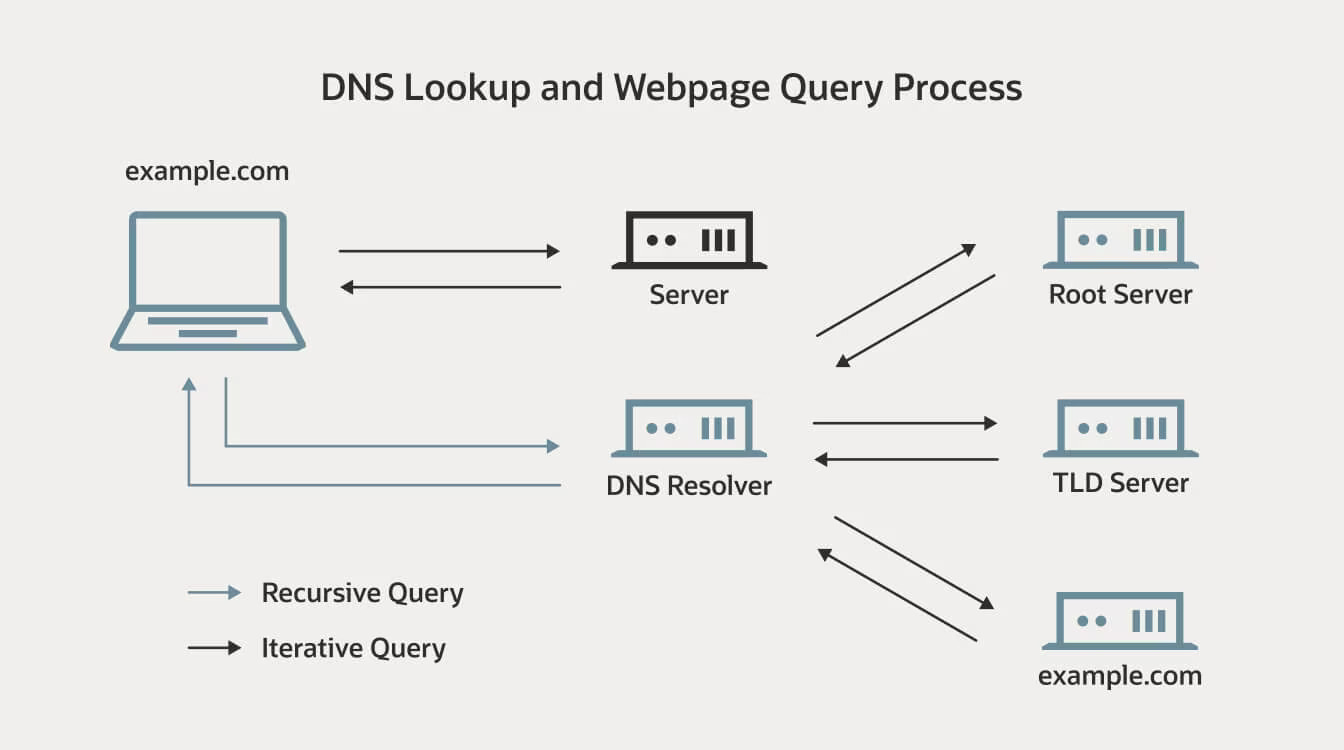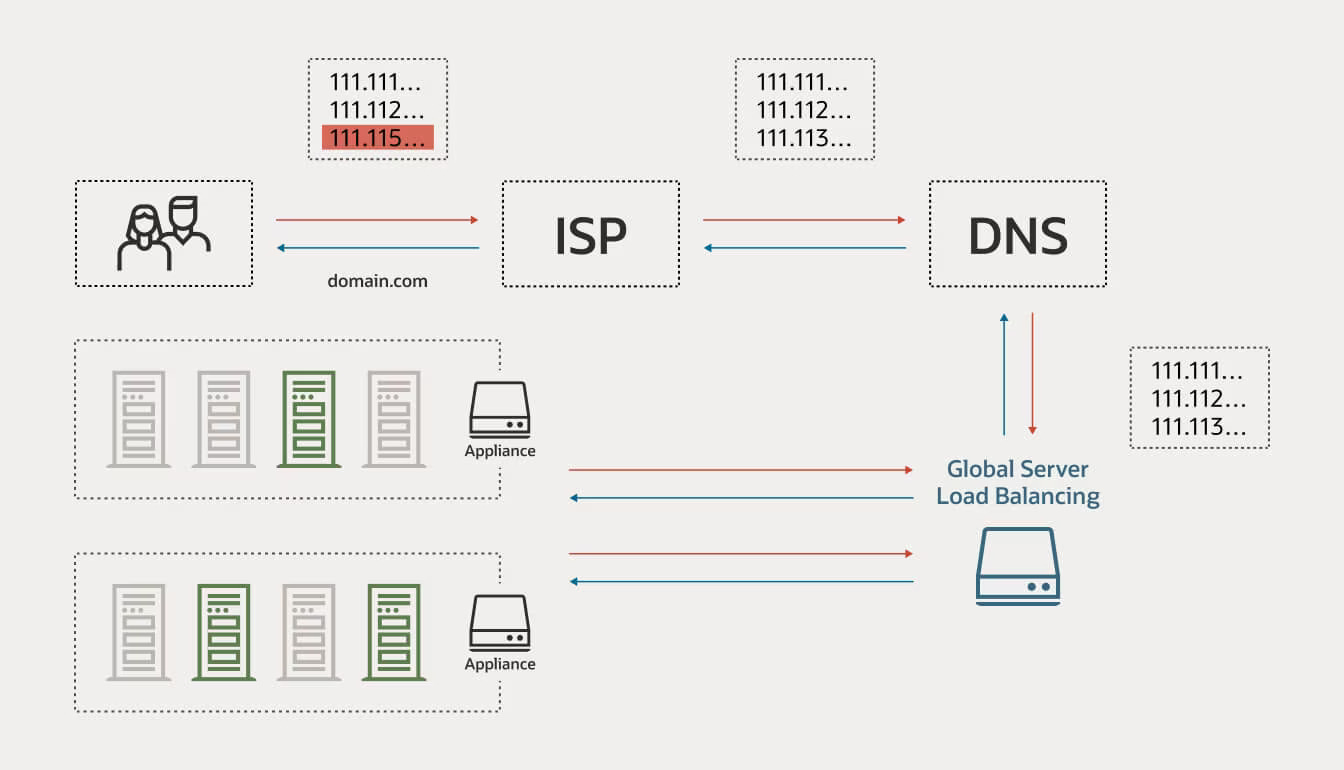
DNS Lookup and Webpage Query Process

IPS to DNS
How DNS works
While the user experience of DNS was covered above, many further steps occur outside of the user’s view. Users typically only see the steps in their web browser’s status bar, such as “contacting host” and “waiting for response.” The initial activity of the web page loading process is centered around DNS lookup and translation.
To understand how DNS works, it’s important to first learn several definitions:
Recursive DNS resolver:
A recursive DNS resolver is the DNS server that processes the initial request and connects with the higher-level authority for established domain details.
Authoritative nameserver: Also known as a root server, these are a set of established servers that provide an authoritative list of domains.
Top level domain: The top level domain contains the suffix of a domain name, such as .com, .org, and .net.
Nameserver: The part of a server that contains the records of domain names and their respective IP addresses, similar to an address book.

DNS Lookup and Webpage Query Process

IPS to DNS
Enterprise DNS use cases
To get a better perspective of how enterprise DNS is used, the following situations offer a closer look.
Intelligent traffic routing
Internet traffic comes with an overwhelming amount of variables from users. Location, frequency, heavy volume due to unexpected events or publicity, and many more items can cause a swell of traffic. DNS traffic management helps to balance this with intelligent systems designed to steer traffic based on location, steer traffic based on IP prefix, load balancing among hardware, and other such tools balance resources and ensure end-users have a fast and responsive experience.
High availability
Every business and organization wants to maximize their uptime for their site, but some circumstances (such as an app that constantly queries a database) prioritize high availability. DNS is part of the equation that ensures high availability, and this is achieved by using a network of hardware that is balanced against failure caused by natural disasters, power outages, weather, and other uncontrollable factors. This geographically diverse network creates a strong level of redundancy to ensure services remain uninterrupted.
DNS cache management
DNS caching is an effective tool in creating faster load/response times for end users. However, effective management of a DNS cache is necessary to ensure accuracy and protect from DNS poisoning so that private data isn’t at risk of benign exposed. Fine-tuning the DNS cache to meet an organization’s requirements is part of the greater DNS management spectrum.